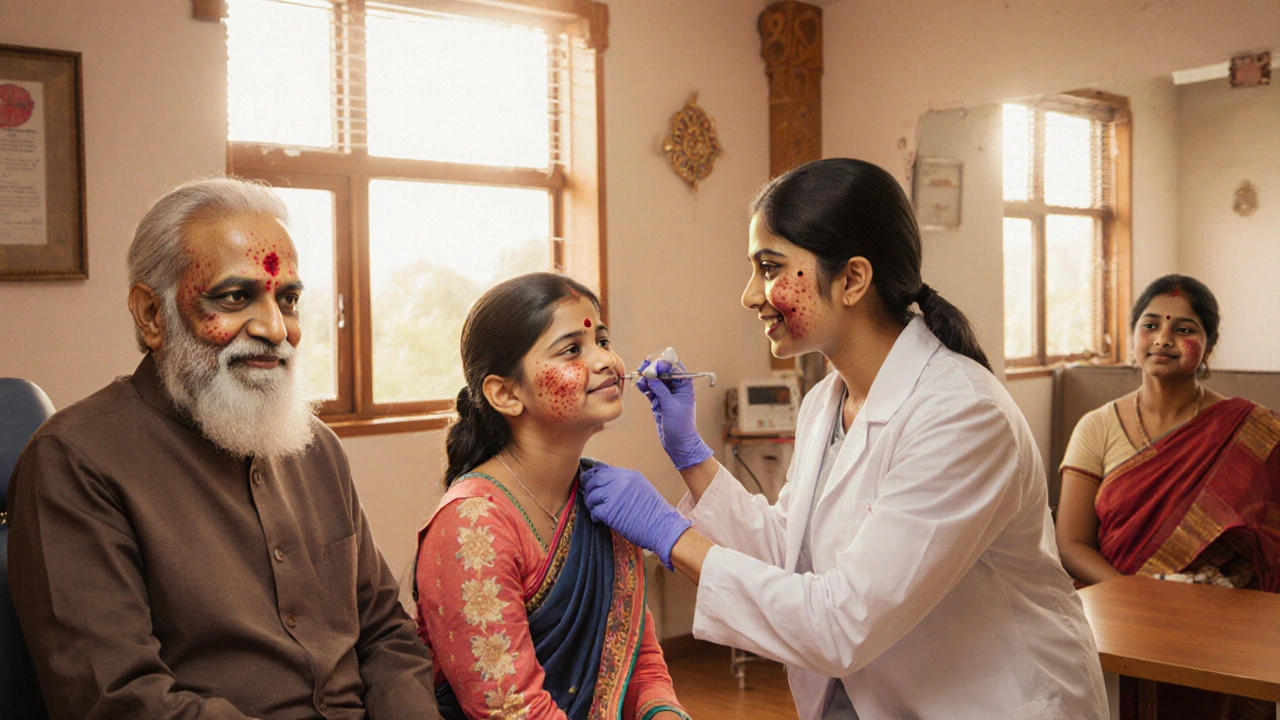Skin Cancer: Essential Facts, Signs, and Prevention Tips
Skin cancer is the most common cancer worldwide, but most people think it only affects older folks or those who love the sun. The truth is anyone can develop it, and catching it early makes treatment a lot easier. Below you’ll find the basics you need to know, how to spot trouble spots, and what you can do every day to stay safe.
How to Spot Skin Cancer Early
When it comes to skin cancer, the best defense is noticing changes before they turn serious. Here are the three most reliable clues:
- New or changing mole. Look for any spot that is different from the rest of your skin. If it has an irregular border, multiple colors, or is larger than a pencil eraser, start paying attention.
- Growth or ulcer. Any sore that won’t heal within three weeks, especially if it bleeds or scabs over, should be checked by a dermatologist.
- Itchiness or tenderness. A spot that suddenly becomes painful, itchy, or sensitive to touch can be a warning sign.
Use the ABCDE rule to keep it simple: Asymmetry, Border, Color, Diameter, Evolving. If a lesion matches any of these, book an appointment. A quick skin check with a professional can rule out a false alarm or catch something early enough for a small procedure.
Protecting Your Skin From UV Damage
The number one cause of skin cancer is UV exposure, whether from the sun or indoor tanning beds. You don’t have to live in the shade, but you do need a few habits:
- Apply sunscreen daily. Choose a broad‑spectrum SPF 30 or higher, and slather it on 15 minutes before heading out. Reapply every two hours, and after swimming or sweating.
- Wear protective clothing. Long‑sleeve shirts, wide‑brim hats, and UV‑blocking sunglasses cut down on direct rays.
- Seek shade. Between 10 am and 4 pm, the sun’s UV intensity peaks. If you’re outdoors for longer than 30 minutes, find a spot under a tree, umbrella, or pop‑up shelter.
- Avoid tanning beds. They emit UV‑A and UV‑B light that can be even more harmful than midday sun.
Even on cloudy days, up to 80% of UV rays still reach your skin, so don’t skip sunscreen just because it’s overcast.
Besides these steps, keep an eye on any family history of skin cancer. Genetics can raise your risk, so regular skin exams become even more crucial if a close relative has had melanoma or squamous cell carcinoma.
Finally, remember that early detection saves lives. Most skin cancers are treatable when caught early, and many people never need aggressive treatment at all. Make a habit of checking your skin once a month, and ask a friend or partner to look at hard‑to‑see spots on your back, scalp, and feet.
In short, know the signs, protect your skin daily, and see a professional at the first hint of change. With these simple moves, you can enjoy the outdoors while keeping skin cancer at bay.
What Does Dermatology Treat? A Complete Guide to Skin Conditions & Care
Discover the wide range of conditions dermatology treats-from acne and eczema to skin cancer-plus how specialists diagnose and manage each problem.

 Hair Care
Hair Care